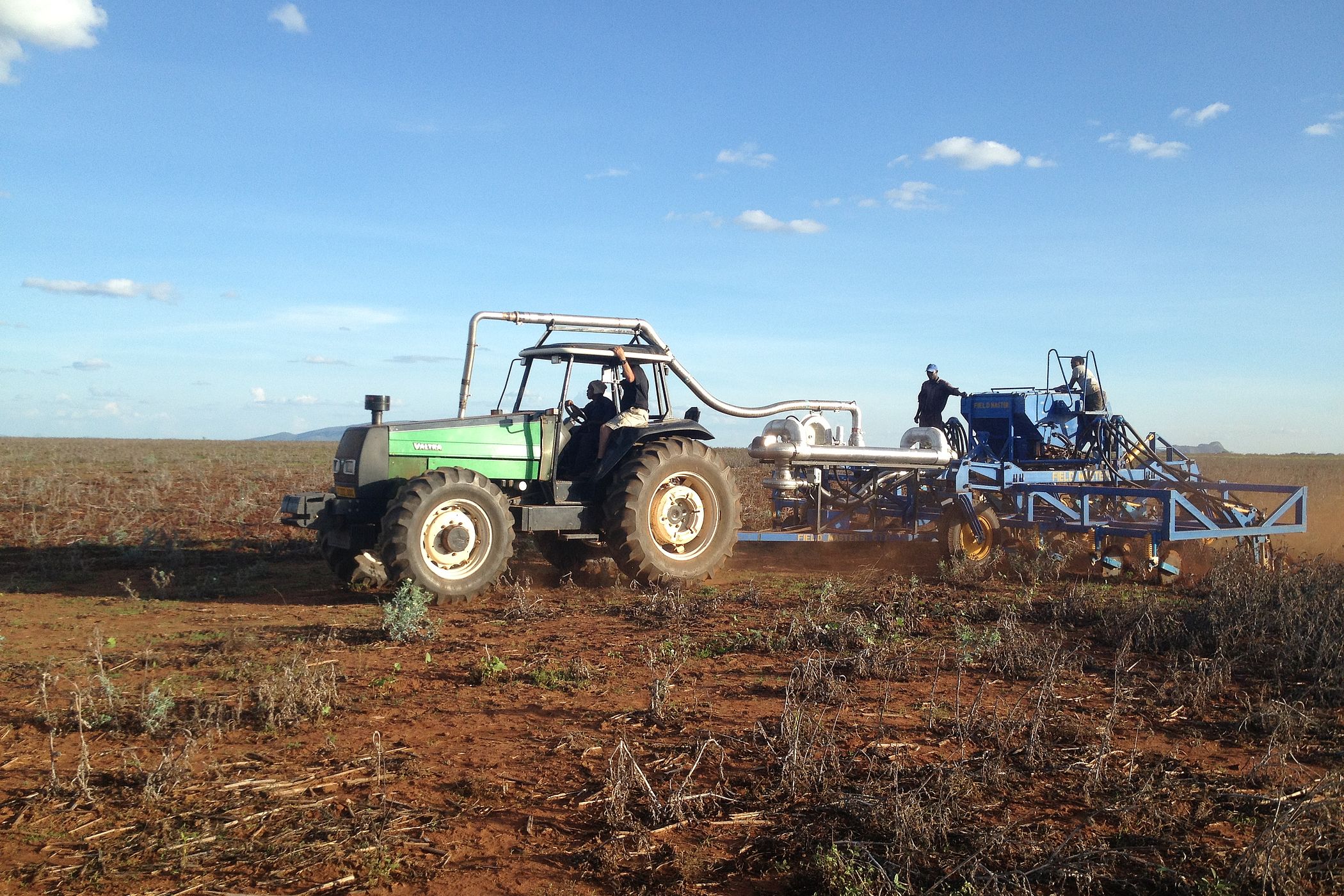Improving the soils of Africa.........
Carbon Farming is introducing technology that can change the continent of Africa, the soils can now be stimulated to sequester carbon and build organic matter in enormous quantities.
- Two Minutes summary of Carbon Farmer
- With over 10 years of worldwide experience the concept is now more accessible to Africa.
- Soils that have grown crops on emissions and without fertilisers are now rich with organic matter.
- With better yields and less costs, Carbon Farming offers a unique option.
- Help us to bring these ideas to African farmers.
and livelihoods of African farmers

Better and more fertile soils are the dream of the African smallholder farmer, to break out of the poor yield/ poor income cycle and put yield back into their crops and cash back into their pockets.
- Equipment has been developped that precision plants their crop, opens their soils and intoduces solubilised emissions.
- This equipment has been tried and tested with cotton and maize growing smallholders of Tanzania and Mozambique.
- Help us spread this technology across Africa through the training and enabling of 'Young farming entrepreneurs'.

Development from the ground up
For over 50 years more than $1 trillion in development-related aid has been spent on development in Africa. Green revolution has followed green revolution, but the continent and the soils have become poorer. The idea that African farming can be saved and invigorated by a sack of fertiliser still persists, and development agencies still make handsome livings and profits out of selling these ideas to funders. Many developed countries are beginning to identify that aid represents the poorest value for money sourced from their tax payers and donors.
Bringing smallholder farmers from the risky business of farming on marginal and tired land, to one where their soils will support them to grow enough crop to support and feed their families, will be the beginning of sustainable development for rural Africa.
Carbon Farmer Africa is not a development agency, but at its heart are two farmers, already farming and trading successfully in Africa. Feet firmly on the ground but with a sky high vision, are looking to bring techniques they have tried and tested to the African smallholder.

These large scale carbon farming practices are being made available and relevant to the smallholder
Sorghum in Chubi, Galeppo, Northern Tanzania.
Soil analysis results showed that this crop over 4 seasons actually increased organic matter by 2.35% (from 2.05% to 4.4%). This is approximately a 10,000kg per ha organic matter gain. Given the right conditions these grain crops will grow vigourously, and as they are building up plant size and yield potential, part of the sugars from photosynthesis are exuded through the roots to feed a teeming soil life. This creates a fantastic soil / crop interaction, and both thrive.
We have developped equipment that brings these techniques to the small scale. Enabling access by the smallest of farmers, to increase the organic matter and fertility of their soils, avoiding the use of fertiliser, with all the associated costs and logistics. Building fertility in the soil, making them more durable to withstand the excesses of climate, and making the livlihoods of the small african farmer more sustainable.

Carbon farmer combines traditional good practice with carbon emission technology.
Work with the CTDP (Cotton Textile Development Project) below Lake Victoria in Tanzania.
Over the past 20 years the area has seen cotton yields fall to below 300kg/acre where it is hardly worth the farmers effort to plant the crop. Soils have become infertile and the whole TZ industry, once the pride of Africa, does not even make 1% of world output.
Ripping has opened up the soil, so that moisture and roots can penetrate deeper, exploiting more of the soils volume. Farmers were encouraged to spread animal dung along this rip line, and the cotton seed then planted along this rip line, so the emergent seed can put down deeper roots and access the nitrogen from the emissions.
Now farmers are pickingup to 900kg/acre. A three fold increase for no more outlay of cash for fertilisers. This is beginning of the turn around for the cotton sector, beginning from the ground upwards. Next year as organic matter builds, yields will be better still.

Carbon farmer will continue to innovate to bring this technology to Africa.
Trial hand push cultivator with emission injection
This shows a small rotovator adapted to inject the emissions into the cultivated soils. This equipment is ideal for smaller fields or in areas where a tractor cannot access. In addition this hand pushed cultivator can prepare soils for finer seeds such as vegetables and sesame.
This was used with a vegetable grower in Northern Tanzania to great effect, crops grew abundantly with no need of the usual fertiliser applications.
Such tools have enormous applications in Africa, not only removing much of the drudgery of the hand cultivation of soils that faces farmers every season. But ensures a speed of soil preparation and allows time for planning and reacting, so farmers can quickly respond to weather, or can plan crops to hit specific markets. It is so often that by providing, or enabling the accessibility of such equipment, gives the farmer a foundation on which to build.









